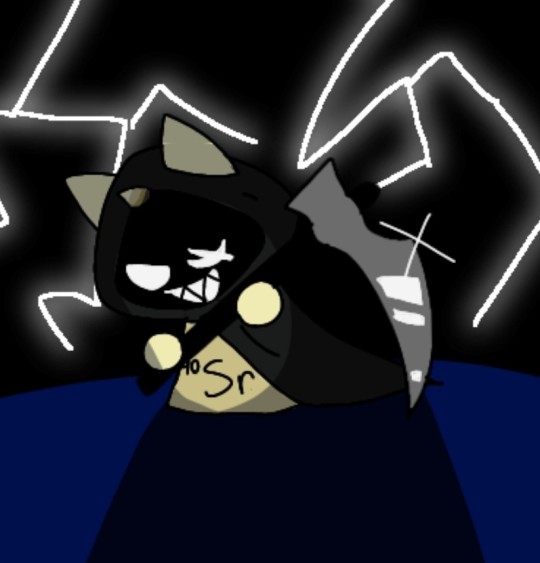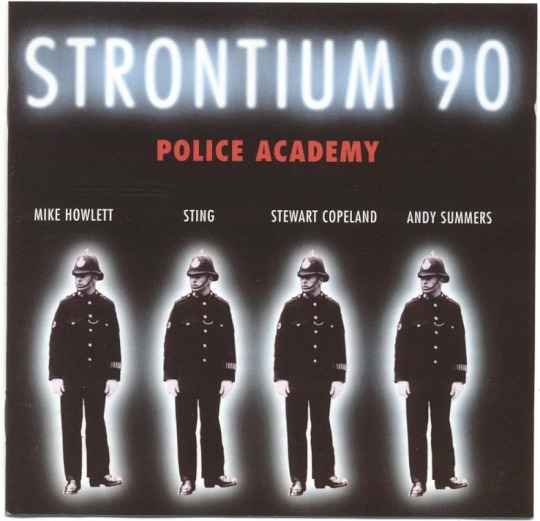#strontium 90
Explore tagged Tumblr posts
Text
when you hear me CALL OUT 🗣️🗣️🗣️
baby kick the WALL OUT 🗣️🗣️🗣️
and CRAWL OUT through the FALLOUT back to MEEEEEE 🗣️🗣️🗣️
#fallout 4#crawl out through the fallout#yippie#think about your hero#when youre at ground zero#fallout#fallout four#fo4#fallout fandom#diamond city radio#boston#boston ma#strontium 90#ground zero#boston massachusetts#masshole
25 notes
·
View notes
Photo

3:12 AM EDT April 7, 2025:
Strontium 90 - "Visions Of The Night" From the album Police Academy (August 26, 1997)
Last song scrobbled from iTunes at Last.fm
Stewart Copeland, Andy Summers, Gordon Sumner, and former Gong bassist Mike Howlett, (mostly) recorded live in Paris, 1977
3 notes
·
View notes
Text





Gordon Matthew Thomas Sumner (born 2 October 1951), known as Sting, is a singer, songwriter, and actor. He was the principal songwriter, lead singer, and bassist for The Police from 1977 to 1985. He earned the nickname Sting because he wore yellow and black sweaters, Sting. After the Police ended in 1985, Sting started his solo career 1985 using rock, reggae, classical,new-age, and worldbeat elements in his music. Sting has received 16 Grammy Awards as a member of the Police and as a solo artist. During the band’s time together, their sound shifted from postpunk/ new wave to other sounds Sting used in his solo career. I started listening to The Police when I was getting into postpunk music. They were one of my favorites. Then, honestly, I stopped listening to them. I liked their reggae-like sound and aggressive sound that is synonymous with postpunk, and I liked Sting’s. In 2003, he received a star on the Hollywood Walk of Fame for recording. Sting has received numerous awards for his work in music, as a solo artist, and with the Police. Sting has sold over 100 million records and won many awards as a solo artist. In 2003, he received a star on The Hollywood Walk of Fame. Sting has worked with various artists and appeared and made music for films. Sting is still making music, and the Police put their differences aside for a small reunion and tour. Sting has a successful career and will continue making music for his fans.
#Singer-Songwriter#Musician#Actor#Activist#Post Punk#New Wave#Pop#Ska#Reggae#World#Jazz#The Police#Last Exit#Strontium 90
0 notes
Text
Current mood:
My brother watching "strontium 90 pool" on repeat while blasting sans (the song) from his phone speaker
0 notes
Note


EEK!!!
#silly#elementcattos#fan design#strontium-90#strontium#isotope#alkaline earth#metal#s-block#scary#terrifying#the fright#the horror
172 notes
·
View notes
Text

spooky catto for spooky time @elementcattos
69 notes
·
View notes
Text
Boneseekers Comic

(The body sometimes confuses Lead and Strontium-90 for calcium, so this Osteoblast [the cell type that makes bones] takes them and puts them inside the bones.)
Lead doesn't just stick around poisoning your brain, some will get put in your bones and eventually will fall out of your bones years or decades later, then poison your brain.
Strontium-90 is a radioisotope found in nuclear bomb fallout, a ton of it got put into the atmosphere back when testing nuclear bombs was still a thing, so everyone who so much as breathed back then still has some little Strontiumballs in them, continuously irradiating their bones. Fun!
Y’know, with that and all the lead and mercury sitting around inside people’s skeletons and brains thanks to leaded gasoline, paint chips, and tooth fillings, old people sure do have a lot of heavy metals inside them. I wonder if you could make any money selling boomers to chemical supply companies. Hmmm…
#science#biology#chemistry#halloween#chemiballs#Bioballs#Leadball#Strontiumball#Strontium-90-Ball#Calciumball#Osteoblastball#this has been in my queue for a year
8 notes
·
View notes
Text

i'm sososo happy i made a little base of my sona on minecraft cause I CAN DO THIS i can make an wear outfit.i am so hapy. i need to learn to make assets on roblox for realsies there is so much i would love to do.
3 notes
·
View notes
Text
My wife has started saying "strontium" as a stim word and that's got this song stuck in my head a lot lately and I figured y'all might enjoy it
youtube
3 notes
·
View notes
Text
Gotta love that in fo4 they decided that there was a cannon reason nuka quantum gives higher rads than nuka cola and instead of having different bottles more vulnerable to radiation or something like that they instead decided that quantum was made with a radioisotope (strontium-90)
#fallout#fallout 4#fallout 3#nuka world#nuka cola#nuka cola quantum#nuka quantum#post apocalypse#post apocalyptic#capitalism#anti capitalist#capitalist hell#capitalist dystopia#radiation#radioactivity#radioactive#radio isotope#radioactive isotope#isotopes#strontium-90
8 notes
·
View notes
Text
In the 2000s, anthropologist Holly Barker and historian Martha Smith-Norris drew on declassified American records to reveal that U.S. officials used Marshall Islanders in human radiation experiments after exposing Islanders in tests of nuclear weapons. American officials called the exposure of Marshall Islanders in the Bravo detonation an "accident." Smith-Norris finds that inexplicable because they relocated Islanders for earlier, less powerful tests, while they left the Islanders in place for several days as a gray snowfall of fallout blanketed their homes after the Bravo test of a much more powerful hydrogen bomb. Once removed to safer ground, exposed Islanders were given regular medical exams (but no treatment) by researchers from the Brookhaven National Lab. The scientists set up a control group for comparison. The existence of a control group suggests the intent of a medical study. The Americans were interested in the rates of ingestion and retention in human bodies of harmful isotopes such as plutonium and strontium-90. In the top-secret studies, the American scientists recorded thyroid cancers and thyroid disease among 79 percent of exposed Marshall Islands children under age ten. Anemia in the group was rampant. They also learned that Rongelap women exposed in the Bravo test had twice the number of stillbirths and miscarriages as unexposed women.
Manual for survival, Kate Brown, p. 244
130 notes
·
View notes
Photo

2:32 PM EST December 28, 2024:
Strontium 90 - "New World Blues" From the album Police Academy (August 26, 1997)
Last song scrobbled from iTunes at Last.fm
Stewart Copeland, Andy Summers, Gordon Sumner, and former Gong bassist Mike Howlett, (mostly) recorded live in Paris, 1977
4 notes
·
View notes
Text
"If I got shot by a dog," my partner began, "would you avenge my death?"
We both knew the answer. Dogs are the perfect creature, entirely blameless for any perceived offence. To hold one of nature's ideal beings responsible using our corrupt series of flawed laws would be a moral crime in its own right. If anything, we would be the oppressors.
"No," I barked towards the Caprice's dashboard.
Working in Animal Control had become significantly more difficult after those scientists figured out how to give dogs the power of speech. Suddenly, they were no longer our beloved companions. It turns out, all these years, dogs had just been going along with it because they didn't really understand how the law worked, and didn't seem to want legal personhood. Then they did. Things went downhill from there. You ever tried to deny a gang of vicious Dachshunds the fruits of their labours?
It's not what I signed up for, is all. What I wanted to do was help doggies and kitties get back to their loving homes. Turns out that makes me a bad guy. And that's exactly what I looked like that fateful night that I responded to a break-in at the old atomic laboratory.
"Bad dog! Drop that Strontium-90!" I yelled at a Schnauzer, my shaking hands holding a can of mace.
Suddenly, I was blinded by lights. Studio lights. It was a sting, set up by the local TV news to capture anti-canine brutality. I lost my job, and my attorney made me do a bunch of speeches to the kids at the newly-mixed high schools, explaining why what I did was a hate crime.
All I can say is that it's a good thing cats weren't interested. They knew they were at the top of the social pecking order already. Sorry, force of habit. I know magpies are trying to get the vote.
193 notes
·
View notes
Text
blaar

HORRIFIC HOUSING PLEASE,,,

4 notes
·
View notes
Note
PEOPLE ARE DRAWINGMY CAT DESIGN I AM GOING TO EXPLODE /POSSSSS AAAAAAAA
I'm glad they are!!!!! I love it too!!!!
22 notes
·
View notes